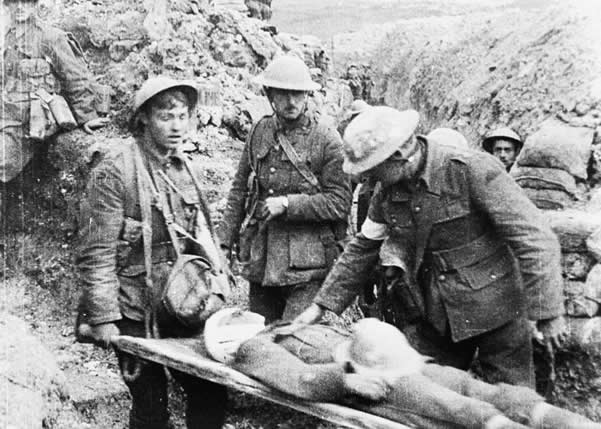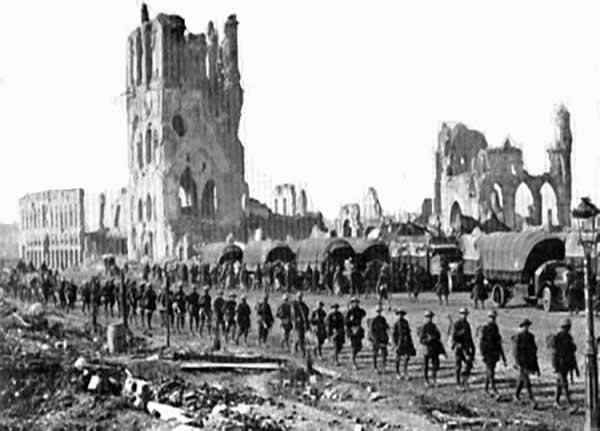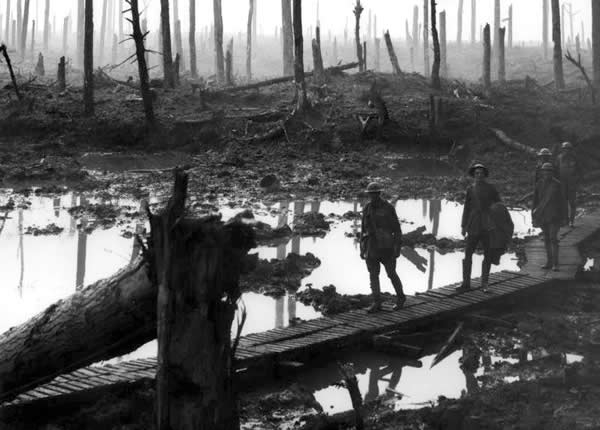WW1 -1915
Many had assumed that 'it will all be over by Christmas', but as the year turned, competing countries increasingly came to realise that the conflict was going to be drawn-out.
Major Battles of WW1| Battle of Dogger Bank (UK) | Opened 24 January 1915 |
| Battle of Bolimov | Opened 31 January 1915 |
| Defence of the Suez Canal | Opened 3 February 1915 |
| Second Battle of the Masurian Lakes | Opened 7 February 1915 |
| Initial Dardanelles Bombardment | Opened 19 February 1915 |
| Battle of Neuve-Chapelle | Opened 10 March 1915 |
| Attempt to Force the Narrows | Opened 18 March 1915 |
| Battle of Shaiba | Opened 11 April 1915 |
| Second Battle of Ypres | Opened 22 April 1915 |
| Landings at Helles & Anzac Cove | Opened 25 April 1915 |
| First Battle of Krithia | Opened 28 April 1915 |
| Counter-attack at Eski Hissarlik | Opened 1 May 1915 |
| Second Battle of Krithia | Opened 6 May 1915 |
| Battle of Festubert | Opened 15 May 1915 |
| Turkish attack at Anzac cove | Opened 19 May 1915 |
| Capture of Amarag | Opened 31 May 1915 |
| Third Battle of Krithia | Opened 4 June 1915 |
| Battles of the Isonzo | Opened June 1915 |
| First Battle of the Isonzo | Opened 23 June 1915 |
| Battle of Nasiriyeh | Opened 27 June 1915 |
| Battle of Gully Ravine | Opened 28 June 1915 |
| Attack on Achi Baba | Opened 12 July 1915 |
| Second Battle of the Isonzo | Opened 18 July 1915 |
| Landings at Suvla Bay | Opened 6 August 1915 |
| Battle of Lone Pine | Opened 6 August 1915 |
| Battle of Sari Bair | Opened 6 August 1915 |
| Battle of the Nek | Opened 6 August 1915 |
| Battle of Hill 60 | Opened 21 August 1915 |
| Battle of Scimitar Hill | Opened 21 August 1915 |
| Battle of Loos | Opened 25 September 1915 |
| Capture of Kut-al-Amara | Opened 28 September 1915 |
| Battle of Es Sinn | Opened 28 September 1915 |
| Third Battle of the Isonzo | Opened 18 October 1915 |
| Fourth Battle of the Isonzo | Opened 10 November 1915 |
| Battle of Ctesiphon | Opened 2 November 1915 |
| Siege of Kut-al-Amara | Opened 7 December 1915 |
| Evacuation of Gallipoli | Opened 18 December 1915 |
Many had assumed that 'it will all be over by Christmas', but as the year turned, competing countries increasingly came to realise that the conflict was going to be drawn-out. They had to prepare for such a prospect and, in Britain, this was done by an extension to the Defence of the Realm Act in March 1915 and by the negotiation of loans from the United States. The DORA gave the government emergency powers to censor the press, requisition property and control workers' jobs, pay and conditions. The government was not really prepared for war and complaints from the army that they had insufficient supplies led to the formation of a coalition government in May (thus ending the last ever Liberal government in the UK). By October, women were being recruited to undertake traditional 'men's work' at home, such as working on trains and buses.
On the Western Front the stalemate continued and although innovations were introduced to warfare - such as the use of poison gas by both sides at the second Battle of Ypres (April) - little was achieved except the killing of more men. Throughout the year, battles such as Loos (September) were indecisive and led to little movement in the lines of trenches. In the east, Austria-Hungary was joined as a Central Power by Bulgaria and attacks continued on Serbia and Russia. Italy, however, changed sides and from April 1915 fought with the Allied forces. Late in April, French and British imperial forces attempted to open a new front in Turkey at Gallipoli. Although the Gallipoli campaign continued for nine months, little was achieved and, in January 1916, the battered and bloody Allied forces (largely Australian and New Zealand troops, or ANZACs) withdrew.
At sea, Britain used its superior fleet to impose a blockade on the German ports. Germany suffered shortages and, by the end of the war, food riots had occurred in a number of German towns. In response to the blockade, the German fleet embarked on a concentrated period of submarine warfare. On 7 May, the Lusitania, a luxury passenger liner travelling from the United States, was sunk off the south coast of Ireland. Almost 1,200 civilians were drowned, including over 100 Americans. The German fleet withdrew to port, fearful that a continued campaign might bring the neutral Americans (with their massive resources and manpower) into the war on the side of the Allies.
World War One was truly the first 'total war' - not only was warfare conducted on land and sea but, on 31 May, London witnessed its first attack from the air as bombs were dropped from the great German Zeppelin airships. During the course of the war, over 2,000 civilians were killed or injured as a result of such raids. Source BBC History website
Germany declares war on Belgium. United States declares neutrality. Great Britain gives Austria-Hungary ultimatum to stand down from hostilities. When Austria-Hungary doesn't comply a state of war is declared at 11.00pm
- The total number of deaths includes about 10 million military
- The total number of deaths includes about 7 million civilians.
- 98 Servicemen/Women went from lemsford
- 78 came back to Lemsford Parish
- 20 Men Never came back
| Shirley Knapp | The Cochrane Family |
|---|---|
| Doreen Wright | William Henry Gardener |
| Ron Forsdykes | Frederick William Reynolds |
| H.J.Brown | The Brown Brothers |
| The Letters of Lemsford | Read the lettters to and from the troops |



